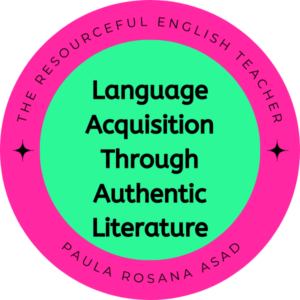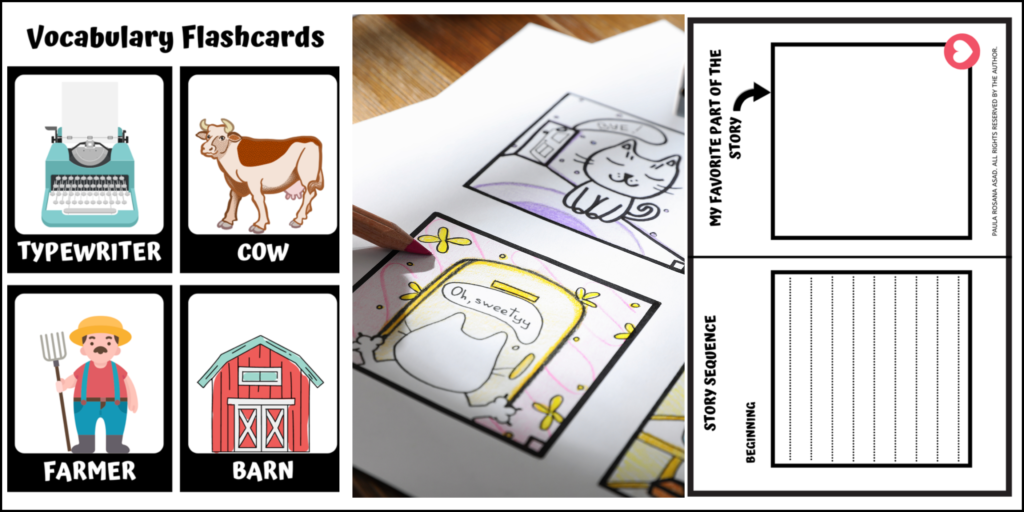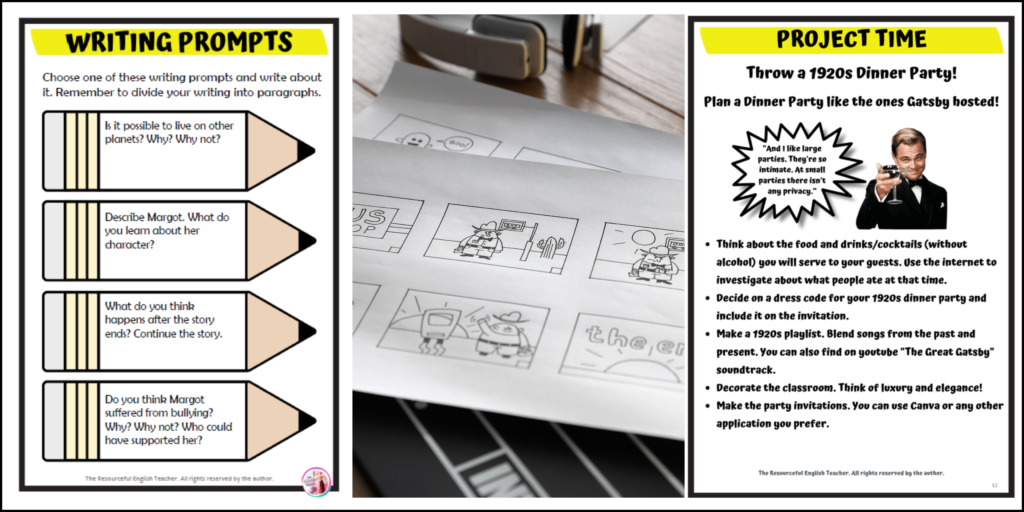Enhancing Language Acquisition Through Authentic Literature
Imagine a classroom filled with eager English language learners, their eyes lighting up as they delve into the pages of authentic literature. The words on the page transport them to far-off lands, introduce them to diverse cultures, and ignite their imaginations. This isn’t just an ordinary activity to do in class, it’s a transformative experience that goes beyond language acquisition. In this blog post, we’ll explore the benefits of using authentic literature in the ESL/EFL classroom and some fun activities for learners to enhance language skills while studying literary texts.

As we have seen, authentic literature offers a multitude of benefits to ESL/EFL learners, from its ability to transport them to new worlds to its capacity to ignite their imagination. But beyond these captivating experiences, authentic literature also plays a crucial role in enhancing language acquisition.
It increases your students’ language level
When students engage with genuine texts, they are exposed to the intricacies of the language in a natural and organic way. They encounter vocabulary, idioms, and grammatical structures that reflect how English is used in real-life situations. By immersing themselves in these authentic language patterns, students are able to develop a deeper understanding of how to use the language naturally and effectively.
It provides examples of language used in real contexts
Authentic literature presents learners with authentic contexts in which English is used, allowing them to observe language in action. They witness how characters communicate, how dialogue unfolds, and how language is influenced by different cultural backgrounds. This exposure to real-life language usage helps students grasp the nuances and subtleties of English, enabling them to communicate more fluently and accurately.
It fosters critical thinking
Incorporating authentic literature also fosters critical thinking abilities. As students engage with complex narratives, they are prompted to analyze, interpret, and evaluate the information presented. They learn to make connections, identify themes, and draw conclusions, all of which contribute to their overall cognitive development. This critical thinking exercise not only improves their language skills but also equips them with valuable life skills that extend beyond the classroom.
It encourages cultural enrichment and global perspectives
By experiencing language in authentic contexts, students develop a greater appreciation for the richness and diversity of cultures around the world. Through the stories they read, they gain insights into different traditions, beliefs, and perspectives. This exposure to diverse cultures not only enhances their cultural understanding but also promotes empathy, tolerance, and inclusivity.
Incorporating authentic literature, therefore, goes far beyond language acquisition alone. It enriches students’ language skills, enhances their critical thinking abilities, and promotes a deeper understanding of different cultures. By embracing the power of authentic literature, ESL/EFL educators can unlock a world of opportunities for their students, fostering a love for language and a lifelong appreciation for the transformative power of literature.
So let’s dive into some of the ways that we can use authentic literature in class
Selecting the Right Texts
When choosing authentic literature, consider the language proficiency level of your students and their cultural background. Opt for texts that are appropriate in terms of vocabulary and complexity, while also reflecting diverse cultures and perspectives. This can help students connect with the content on a personal level and encourage a deeper understanding of different cultures.
Check out these stories I use with primary school students. CLICK HERE!
Pre-Reading Activities
Before diving into the text, engage students in pre-reading activities that activate their prior knowledge and build anticipation. These activities set the stage for meaningful discussions and enhance comprehension.
- Picture Walk: Look through the book’s illustrations or cover with the students. Ask them to predict what the story might be about based on the pictures.
- Story Sequencing: Show a series of pictures or cards depicting key events from the story and ask students to arrange them in the correct order.
- Prediction Jar: Write down predictions about the story on slips of paper and place them in a jar. Read them aloud after reading the story to see if any predictions come true.
- Vocabulary Hunt: Provide a list of challenging words from the text and have students search for them while reading. Encourage them to guess the meanings based on context.
Active Reading
Encourage students to actively engage with the text by using a variety of reading strategies. Teach them how to annotate, underline key passages, and jot down questions or observations in the margins. This not only helps with comprehension but also encourages critical thinking and analysis of the text.
You can also try the following activities:
- Sound Effects: Assign students specific sound effects to make as you read the story. This adds an interactive element and keeps them engaged.
- Question Time: Periodically pause while reading and ask students open-ended questions about the story. Encourage them to think critically and discuss their answers.
- Plot Prediction: Pause at key points in the story and ask students to predict what might happen next. Discuss their predictions and how they reached their conclusions.
- Reader’s Theater: Act out a short scene or dialogue from the story with students taking on different character roles.
Post-Reading Discussions
After students have read the text, facilitate meaningful discussions that allow them to share their thoughts, opinions, and interpretations. Encourage students to support their arguments with evidence from the text and engage in respectful dialogue with their peers. These discussions foster critical thinking, develop analytical skills, and promote a deeper understanding of the literature.
Extension Activities
Go beyond the text and provide extension activities that encourage students to apply their knowledge and engage in creative thinking. This can include writing assignments, group projects, or even multimedia presentations. By connecting the literature to real-world scenarios or personal experiences, students can further develop their language skills and cultural understanding.
Why don’t you try the following activities?
- Create a Board Game: Challenge students to design a board game or card game based on the story’s plot, characters, or themes.
- Author Interviews: Organize a mock interview with the author of the book, where students can research the author and prepare questions.
- Book Cover Redesign: Task students with redesigning the book cover to reflect their interpretation of the story’s themes and elements.
- Book Trailers: Have students create short book trailers or video summaries of the story, which can include visuals, music, and narration.
- Storyboard Creation: Ask students to create a storyboard of the key events in the story, using drawings or images to depict each scene.
- Alternate Endings: Encourage students to write or illustrate an alternate ending to the story, explaining how it would change the plot and character development.
- Character Collages: Have students create collages or visual representations of characters, including images and text that capture their traits, motivations, and roles in the story.
Ready for Action?
By following these practical tips, teachers can successfully integrate authentic literature into their English lessons, creating a dynamic and enriching learning environment. The use of authentic literature not only enhances language skills but also fosters critical thinking among students.
Have fun teaching!
Paula.



